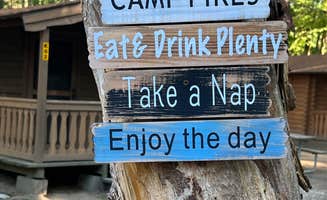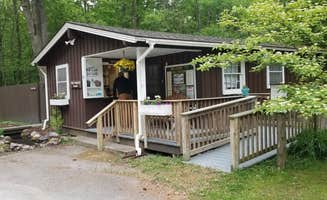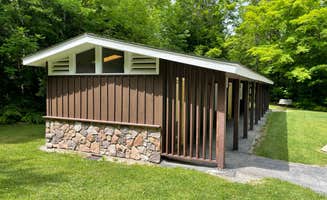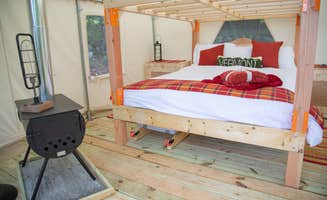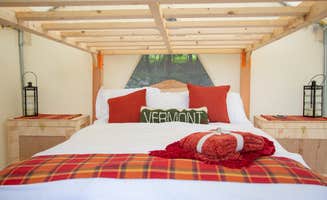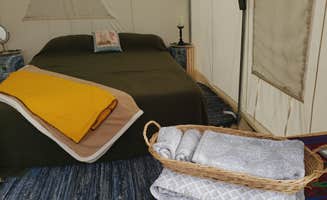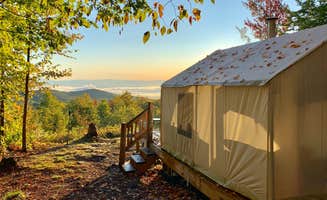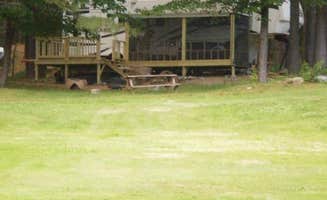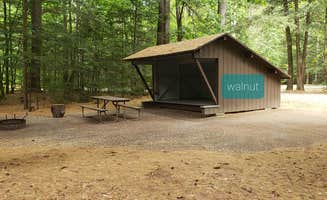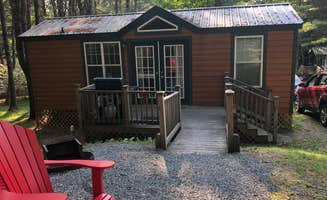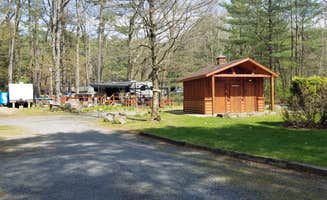Central Vermont's camping terrain around West Rutland sits at elevations between 500-1500 feet with a mix of mountain woodland and lakeside locations. The region experiences warm summers with average July temperatures near 80°F and cool evenings, creating ideal camping conditions from late May through early October. Winter camping requires specialized gear due to temperatures frequently dropping below freezing.
What to do
Hiking the Appalachian Trail sections: Access multiple trail segments near Gifford Woods State Park Campground, which sits directly on the famous trail route. "We met a number of AT through hikers, who were very willing to share their adventure stories," notes Thomas M., highlighting the social aspect of this long-distance trail. For day hikers, several shorter options exist within the park.
Kayaking on small, quiet ponds: Half Moon Pond offers protected waters with minimal motorized traffic. "We fished and kayaked right from our site. Oddly, our fire pit faced the neighboring site rather than the pond," shares Rebecca D. about her waterfront campsite at Half Moon Pond State Park Campground.
Stargazing from yurt accommodations: Yurt camping near West Rutland provides unique nighttime viewing opportunities through the traditional circular skylights. The yurts at Caton Place Campground feature clear dome skylights, making them popular with astronomy enthusiasts. "Very well manicured Camping Area, clean updated restrooms. Friendly campers and great view!" reports William from his stay at Caton Place.
What campers like
Clean, well-maintained facilities: State parks in the region receive consistent praise for upkeep. At Quechee State Park Campground, "Bathrooms are immaculate with coin (quarters)operated showers. There are plenty of fresh water spigots and a spacious dump site if needed," according to Chris A.
Privacy between campsites: Campgrounds around West Rutland offer better site separation than many commercial campgrounds. At Moose Hillock Camping Resorts, "The sites at this park are huge. You could have parked three RVs in our site. Added bonus is that there is nice separation between sites with trees and shrubs that block out your neighbors and provide lots of privacy," describes Nancy W.
Waterfront camping options: Several campgrounds offer sites directly on ponds or lakes. "We had a lean to site at this campground. Facilities were great. The lake was beautiful and rented boats and canoes. Swimming is also available," writes Debbi B. about her stay at Emerald Lake State Park Campground.
What you should know
Seasonal operation limitations: Most campgrounds in the West Rutland area operate only from May through mid-October. At Gifford Woods, one camper noted, "Upper Loop sites are spaced further apart. Wooded. AT goes right through the campground. Lovely late summer camping experience."
Varying site quality within same campground: Research specific site numbers before booking. "Rogers Rock is a great campground with many things to do like hiking, kayaking, swimming, biking and playing on a playground. When we went some fellow campers were very loud," reports Meike W., highlighting that social atmosphere can vary.
Limited cell service: Several campgrounds report weak or non-existent signals. At Lake Bomoseen KOA, one reviewer warned, "Cell service is very limited. Very remote... the WIFI didn't even work at the office." Prepare by downloading maps and information before arrival.
Tips for camping with families
Choose campgrounds with dedicated children's programming: Some parks offer organized activities. "Rangers also run fun programs for children- my children churned butter and made popcorn over the campfire one night, and made tie dyed T-shirts the next (for no fee)," shares Jen B. about her family's experience at Quechee State Park.
Consider yurt camping for first-timers: Yurt accommodations near West Rutland provide a comfortable transition for families new to outdoor stays. Caton Place Campground offers yurts with real beds and electricity, easing children into the camping experience while still providing outdoor immersion.
Look for swimming options with varied depths: At Lake Bomoseen KOA, Becca D. points out, "It has three pools. A kiddie pool, a water slide pool and a larger pool that goes from 3 ft to 6 ft," which allows children of different ages and swimming abilities to enjoy water activities safely.
Tips from RVers
Call ahead about access roads: Some campgrounds have challenging approach roads. "Driving out of the site was just as bad. You have to go down a small hill and bottom out the front and then drag the backend out of the dirt. This campground is not big rig friendly," warns Jim B. about his 43-foot motorhome experience at Caton Place Campground.
Book sites away from main roads: At Rogers Rock, one camper advised, "Look carefully at the map when choosing your site. Many of them are near the main road." This helps avoid traffic noise that can disrupt the camping experience.
Check hookup locations before arrival: Knowing where utilities connect helps with positioning. "The water/electric was positioned perfectly that we could have gotten away with using 5 foot connections," notes Debbie W. about her site at Lake George RV Park, showing that some campgrounds have well-designed utility placements.


